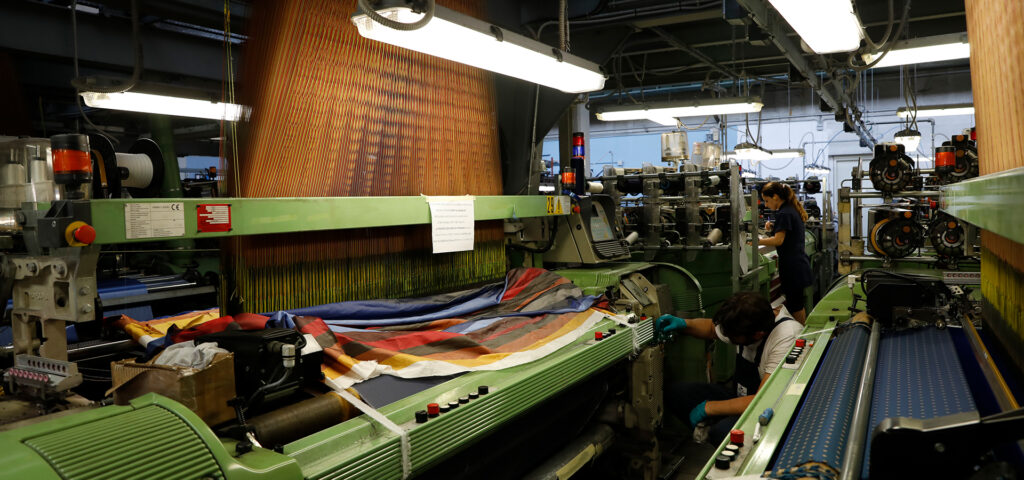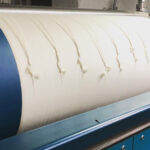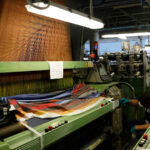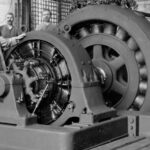THE JACQUARD FRAME IN 5 MOVES
The Jacquard machine is considered the ancestor of automatic calculators. Computers, for friends. This was in fact the first machine capable of reading the information of a punched card. But let’s see a little better how the Jacquard loom works.
THE PHASES OF THE PRODUCTION OF JACQUARD FABRICS
The secret of the success of the machine invented by Joseph-Marie Jacquard lies in having simplified and speeded up the production of even very complex designs. Before this phenomenal invention, the looms had to have many heddles that moved the warp threads: the latter, in fact, had to be able to move independently of each other. In addition to the weaver, therefore, an aide had to work on the loom, whose job was precisely to move the healds at the right time.
To solve this problem, Jacquard invented a device that works like this:
- The threads that must work together are gathered in a heddle mesh and connected to a counterweight, through a string that starts from the top. You can see these cords in the photo opposite;
- Each string is connected to a series of perforated cards placed on a rotating cylinder. The holes on each card correspond to the design to be reproduced;
- The cardboard holes only allow the corresponding counterweights to fall: if the card has a hole in correspondence with the string, its counterweight falls and causes only the warp threads connected to it to rise. All the other threads instead remain firm in their place;
- The weft threads can thus pass through the warp and form the pattern;
- After which, the weaver beats the plot thus obtained with a comb and advances the perforated cards. The cords thus find new free holes and you can continue with the design.
In this way, a single weaver is enough to make the loom work, it does not need someone to move the threads for her: the jacquard loom does it automatically.
In short, it is a real revolution: it is the first machine capable of performing repetitive work automatically.




